KENYA
EXPLORE KENYA
Kenya stands out as an iconic destination in Africa, offering the best of beach, bush, and city experiences, as well as active and sustainable travel options for the discerning traveller. Most visitors come to Kenya for its iconic and authentic wildlife experiences and return for its people.

Masai Mara National reserve
Masai Mara National Reserve is located in south west Kenya and is a vast scenic expanse of gently rolling African savannah plains measuring 1510 square kilometers in area and bordering the Serengeti National Park in Tanzania to the south. Masai Mara is a unique wildlife conservation haven famous for its spectacular natural diversity of wildlife and is the premier Kenya Safari location in East Africa, offering visitors numerous reasons to visit this animal paradise. Large numbers of Lions, Cheetah, Elephant, Rhino, African Buffalo, Wildebeest, Giraffe, Zebra and many more animals are found in the park in their natural habitat, unconfined and free to roam the vast Kenyan wilderness stretching for miles on end.
It is no surprise that tourists from the world over travel here to experience a Masai Mara Safari tour, more so as the reserve has been voted one of the new Seven Wonders of the World. Regarding the origin of the name, the word ‘Masai’ comes from the Maasai tribe, nomadic inhabitants of the area and the word ‘Mara’ is their word for ‘spotted’, referring to the ubiquitous flat topped acacia trees, shrubs and bushes that dot the landscape across most of the reserve.

Samburu National reserve
One of the famous Safari destinations in East Africa, Samburu National Reserve is located in Northern Kenya and is a premier game reserve situated on the banks of the Ewaso Ng’iro river. This vast expanse of remote pristine wilderness measures 165 square kilometers in area and borders the Ewaso Ng’iro River to the south, which separates it from the Buffalo Springs National Reserve. Samburu Reserve is a unique wildlife conservation haven famous for an abundance of rare species of animals such as the Grevy Zebra, Somali Ostrich, Reticulated Giraffe, Gerenuk and the Beisa Oryx. The reserve is also home to a population of close to 900 Elephants. Large predators such as the Lion, Leopard and Cheetah are an important attraction (Kamunyak the famous Lioness that adapted a baby Oryx is a resident in the reserve). Samburu is infact one of the better locations in Kenya to spot Leopard. Wild dog sightings are also a common attraction to this unique protected area and Birdlife is abundant with over 450 recorded species.
Samburu as a wildlife eco system now also comprises a number of conservancies and group ranches bordering the main reserve such as the Kalama Conservancy, West Gate Community Conservancy and Namunyak Wildlife Conservancy. Samburu Reserve is considered among the best wildlife reserves not just in Kenya but also in Africa and this website, samburureserve.com, offers useful and practical information to guide tourists in planning their visit or for booking a Safari in Samburu most suited to their preferences. Travelers would normally have numerous questions while planning their visit, ranging from what would be the best time to visit, where to stay and what best experiences to book while here. You may contact us and we will be happy to provide relevant information to your questions through this platform.
In case you require any guidance or recommendations about a visit to Samburu National Reserve, please do get in touch with us via email and we promise to respond immediately.
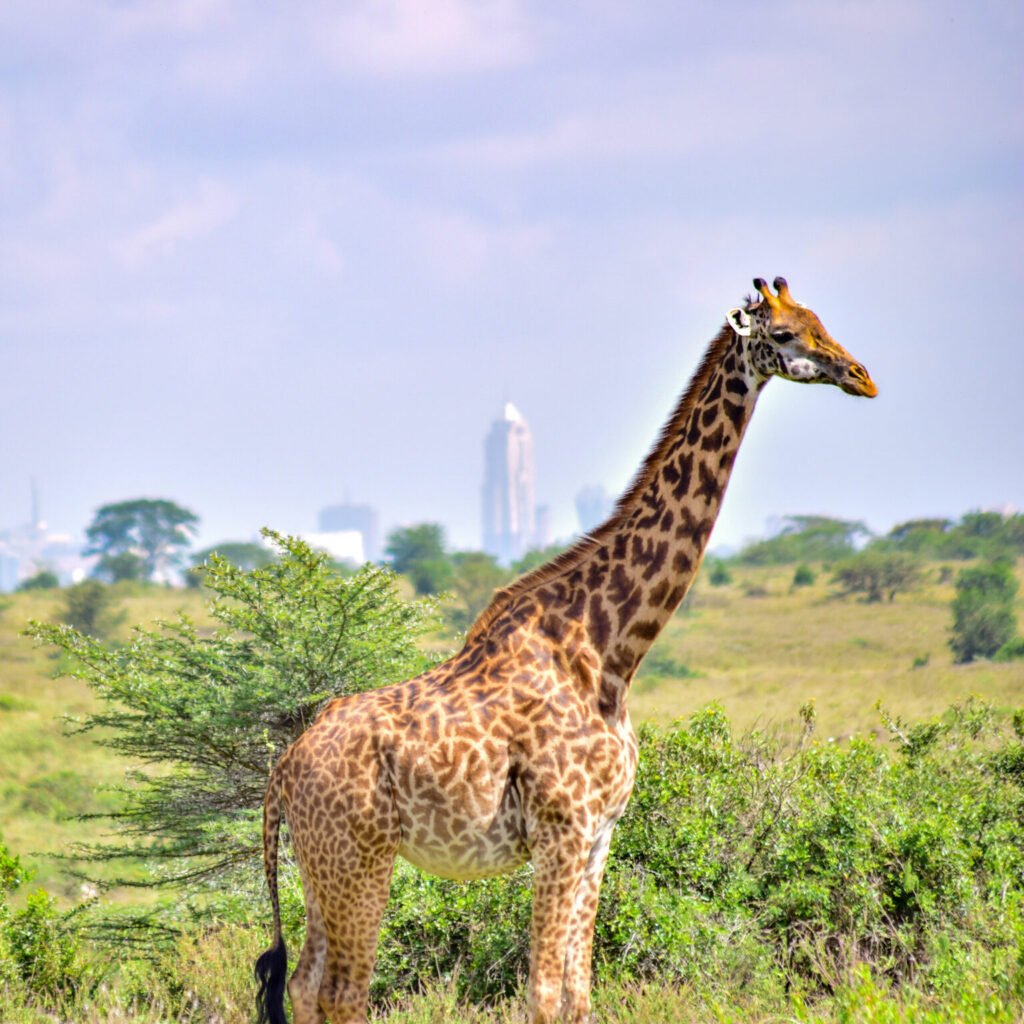
Nairobi National park
A short drive out of Nairobi’s central business district is the Nairobi National Park. Wide open grass plains and backdrop of the city scrapers, scattered acacia bush play host to a wide variety of wildlife including the endangered black rhino, lions, leopards, cheetahs, hyenas, buffaloes, giraffes and diverse birdlife with over 400 species recorded. Visitors can enjoy the park’s picnic sites, three campsites and the walking trails for hikers.
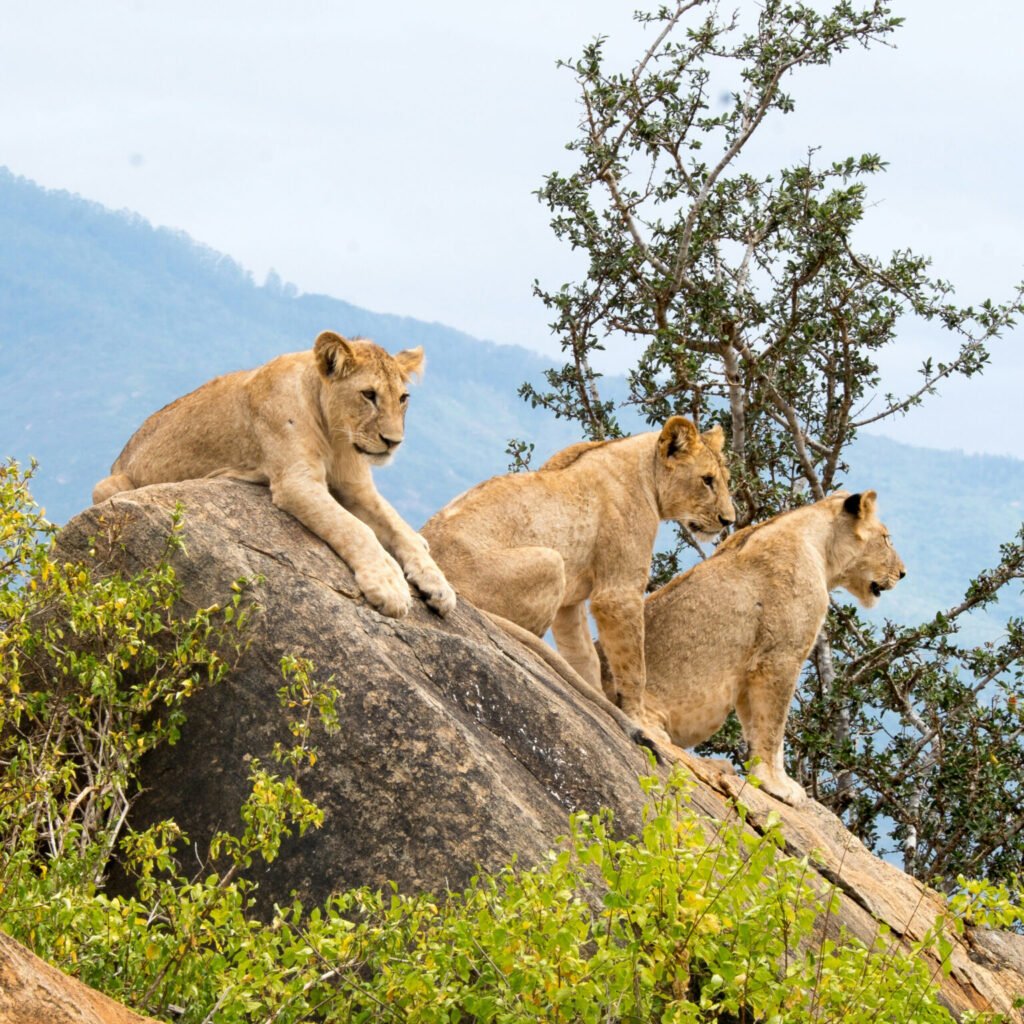
Tsavo East National park
The sight of dust-red elephant wallowing, rolling and spraying each other with the midnight blue waters of palm-shaded Galana River is one of the most evocative images in Africa. This, along with the 300 kilomtere long Yatta Plateau, the longest lava flow in the world, make for an adventure unlike any other in the Tsavo East. The park forms the largest protected area in Kenya and is home to most of the larger mammals, vast herds of dust –red elephant, Rhino, buffalo, lion, leopard, pods of hippo, crocodile, waterbucks, lesser Kudu, gerenuk and the prolific bird life features 500 recorded species.
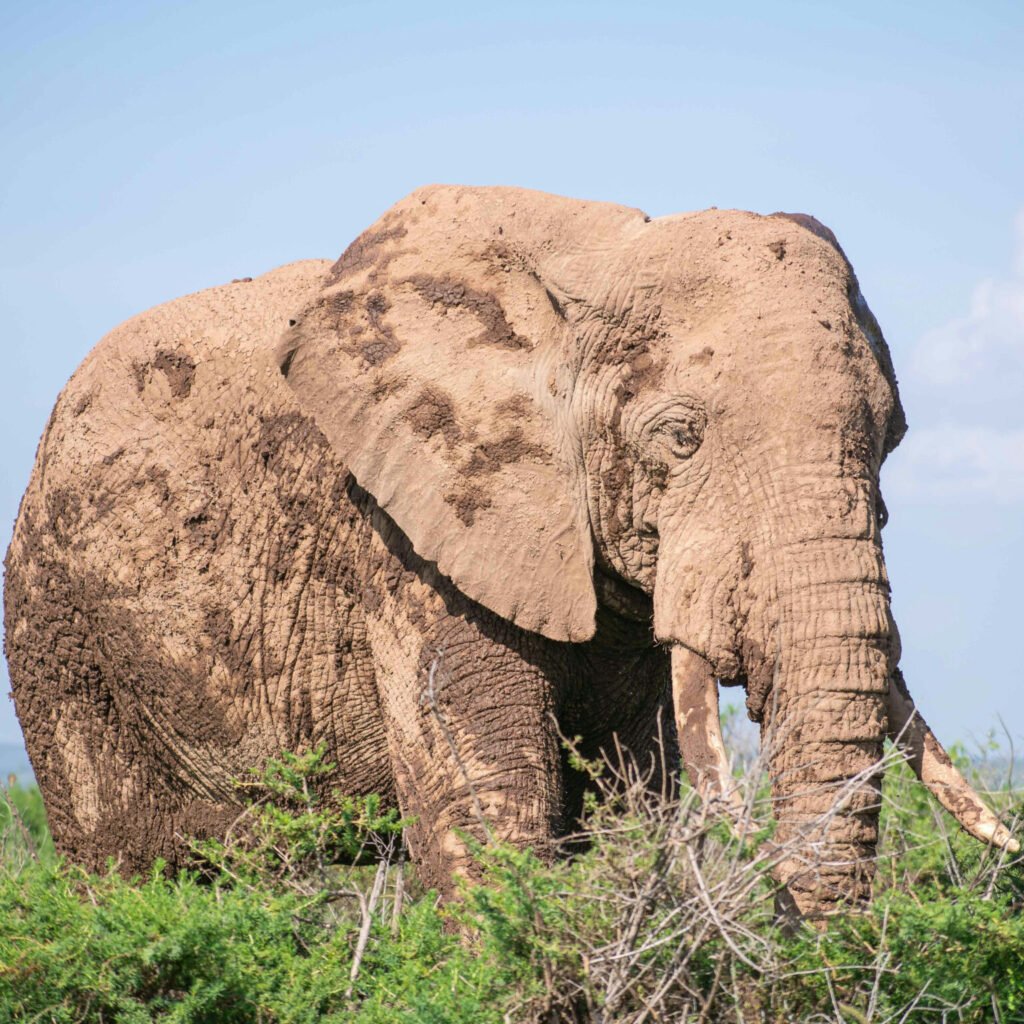
Amboseli National Park
Crowned by Mount Kilimanjaro, Africa’s highest peak, the Amboseli National Parks is one of Kenya’s most popular parks. The name “Amboseli” comes from a Maasai word meaning “salty dust”, and it is one of the best places in Africa to view large herds of elephants up close. Nature lovers can explore five different habitats here ranging from the dried-up bed of Lake Amboseli, wetlands with sulphur springs, the savannah and woodlands. They can also visit the local Maasai community who live around the park and experience their authentic culture.

Lake Nakuru National Park
On the floor of the Great Rift Valley, surrounded by wooded and bushy grassland, lies the beautiful Lake Nakuru National Park. Visitors can enjoy the wide ecological diversity and varied habitats that range from Lake Nakuru itself to the surrounding escarpment and picturesque ridges. Lake Nakuru National Park is ideal for bird watching, hiking,picnic and game drives.
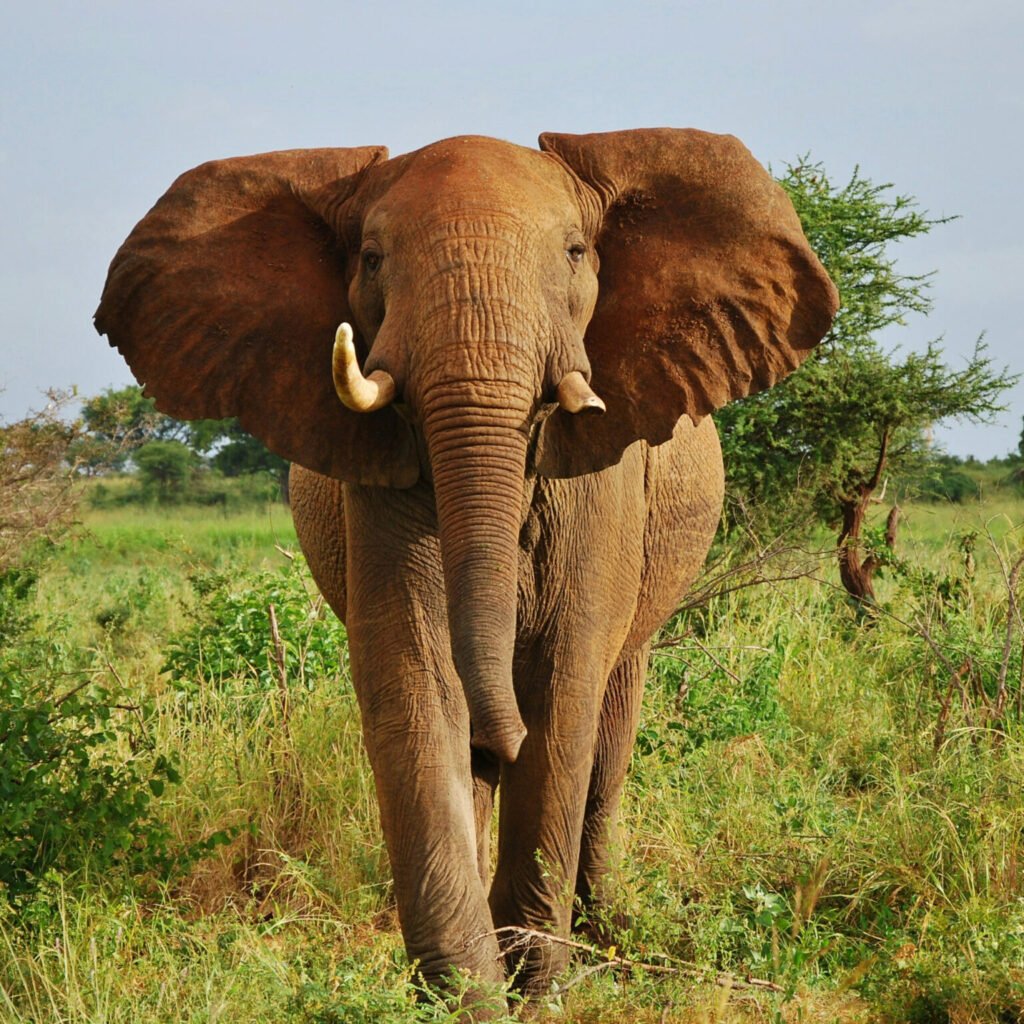
Meru National Park
Marvelous, remote, rugged and prominently unspoilt, Meru sits intact in a wilderness less visited, yet surrounded by undiluted natural beauty. It is wild and beautiful, straddling the equator and bisected by 13 rivers and numerous mountain-fed streams. The scenery is diverse from woodlands at 3,000ft on the slopes of Nyambene mountain range, northeast of Mt. Kenya to wide-open plains with meandering riverbanks dotted with doum palms.
The park teems with a variety of wildlife species including elephant, Grevy’s zebra, lion, cheetah, leopard, hartebeest, hippo, buffalo and the reticulated giraffe among others. Meru hosts a rhino sanctuary that is home to the endangered black and white rhino species. Critically endangered, the rhinos are under a twenty-four hour surveillance. The sanctuary offers one of the best rhino viewing experiences in the wild.
Bird life is also exceptionally diverse with over 400 bird species recorded. These include Peter’s Fin foot, inhabiting the Murera and Ura rivers; Pel’s fishing owl, kingfishers, rollers, bee-eaters, starlings and weavers. The rivers abound with hippo populations, crocodiles, and fish.
The park is famous as the setting for Joy Adamson’s book ‘Born Free”, the story of the Adamson’s life and research amongst lions and cheetahs. Elsa the lioness was the most well known and her grave is marked inside the park.
At the boarder of Meru National Park is Bisanadi National Reserve known as “Kinna” the border between Meru and Bisanadi Parks is the traditional division between the Meru and the Borana people. This is a true wilderness.
Visitors can enjoy game viewing, camping, picnicking, hiking and swimming in the swimming pool located next to the Bwatherongi (Kinna) bandas (cottages). Situated about two hours’ drive from Meru town past Maua town, the rich culture of the Ameru, Borana and Tharaka communities in the cultural villages is also an activity visitors can savor. Ameru culture at Murera Gate, which is the park main gate, Borana culture at Bisanadi gate, and Tharaka culture at Ura gate.

Mount Kenya National Park
Majestically standing, Mount Kenya that straddles across Meru and Nyeri counties and part of Kirinyaga is the second highest peak in Africa standing at 5,199m high. It is an ancient extinct volcano. There are 12 remnant glaciers on the mountain, all receding rapidly, and four secondary peaks that sit at the head of the U-shaped glacial valleys.
With its rugged glacier-clad summits and forested middle slopes, this mountain is one of the most impressive landscapes in East Africa. The park hosts approximately 20 lakes and tarns. Three major peaks dot the mountainous scenes. These are; Batian (5,199m) & Nelion (5,188m). The two are mainly for visitors interested in technical climbing activities. The third peak is Point Lenana (4,984m).
The scenery and ecological formations surrounding this World Heritage Site are breathtakingly beautiful. The Park is also a Biosphere Reserve.
To the Kikuyu tribesmen, Mt. Kenya is the home of the Supreme Being; Ngai, a name also used by the Maasai and Kamba communities. In traditional prayers and sacrifices, Ngai is addressed by the Kikuyu as Mwene Nyaga; Possessor of Brightness. The name comes from Kiri-Nyaga the Kikuyu name for Mt. Kenya, meaning Mountain of Brightness – Ngai’s official home, a place to be treated with respect by visitors who come here among other things seeking divine and spiritual nourishment.
Pristine wilderness, lakes, tarns, glaciers and peaks of great beauty, geological variety, the forest, mineral springs, rare and endangered wildlife species, high altitude adapted game, unique montane and alpine vegetation with 11 species of endemic plants are a sight. Wildlife includes buffalo, elephants, black and white colobus and Sykes monkeys, rock and tree hyrax, white tailed mongoose, suni, black fronted duiker, mole rat, bushbucks, waterbuck and Elands. Animals rarely seen include leopard, bongo, giant forest hog, Suni antelope, Mt. Kenya mole rat, skinks(lizards)montane viper, and a variety of owls. Over 130 bird species have been recorded.
Part of the mountain’s fascination is the variation in flora, including Giant Groundsel and Lobelia, and fauna as the altitude changes. The lower slopes are covered with dry upland forest, the true montane forest begins at 2,000m is mainly cedar and podo. At 2,500m begins a dense belt of bamboo forest, which merges into the upper forest of smaller trees, interposed with glades. In this area, the trees are covered with high altitude lichen.
The high altitude heath at the top (3,000-3,500m) is generally open dotted with shrubs; African Sage protea and helichrysum. The peak (above 3,500m) is moorland, with little game other than high altitude zebra and eland common in the northern moorland.
Visitors can enjoy game viewing, mountain climbing, and camping, picnicking, bird watching, scenery and nature photography.
Altitude: 11,000-17,000FT
Area: 2,800 sq.km
Location: Laikipia County
Gazettement: 1968
Distance from Nairobi: 90 KM

Chyulu hills National Park
Verdant rolling hills of endless green, great blue skies and spectacular landscape views are what the Chyulu Hills provide to nature lovers. Large mammals include buffalo, bushbucks, elands, elephants, leopards, giant forest hogs, bush pigs, reedbucks and giraffes along with various reptiles and insects. Horse riding, camping, mountain climbing and bird watching can be enjoyed in this hidden part of paradise.
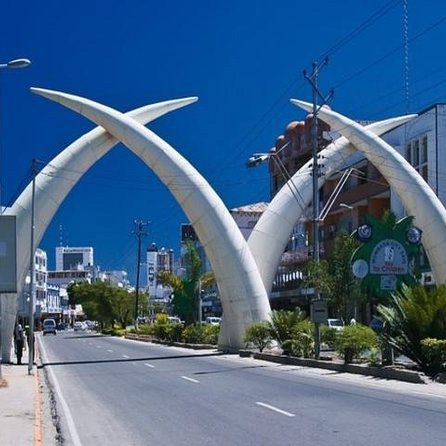
Mombasa
The diversity of Mombasa is remarkable, making the city unlike any other in Kenya, with a unique cultural blend of Africans, Arabs and Asians representing many religious belief systems, including Christian, Muslim, Buddhist and Hindu. Touring the city not only allows you to see the architecture and learn about the cultures, but you also gain a deep understanding of the historical foundation of the ethnic diversity that makes Mombasa one of the most interesting destinations in Africa, such as how Afro-Asians and Afro-Arabs including the Swahilis have been living on the coast of East Africa for more than 500 years.
Stops on the trip include local bazaars, Fort Jesus, visits to the handicraft carvers and the Mackinnon Market. The first stop on the excursion, Fort Jesus, was built in 1593 based on designs by an Italian architect and engineer named Joao Batista Cairato. Originally used by the Portuguese, the imposing structure rests upon a coral ridge at the entrance of the old town harbor, and its strategic location has resulted in many battles for its control.
The site has also been used as soldier barracks and a prison before being obtained by the Trustees of the Kenya National Museum in 1958, and the on-site museum was opened in 1962. After the fort, your AfricanMecca guide leads you into alleys of Old Town, the original Mombasa city that was built in the 13th century and still maintains many significant architectural features of the time, such as filigree timber balconies, beautifully carved wooden doors, Indian and colonial designs and more than 20 mosques, and in 1985, the area received protected status as a conservation project to preserve the historically significant buildings.
Thereafter, your tour guide then takes you to Mackinnon Market and the shops on Langoni Road where you find a fascinating variety of goods including produce, such as fruits and vegetables from local farms, meats, textiles and even some unexpected items, both local and international, such as safari shoes by Bata, pseudo designer label jeans and unbranded clothing from western countries.
